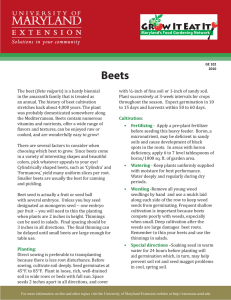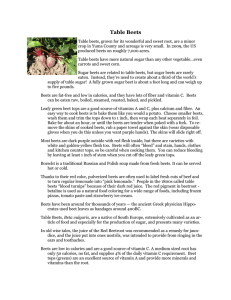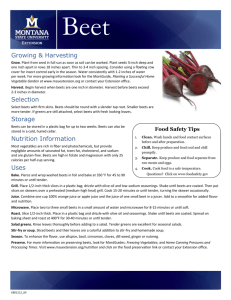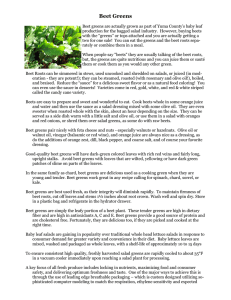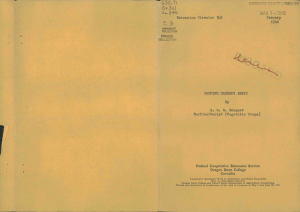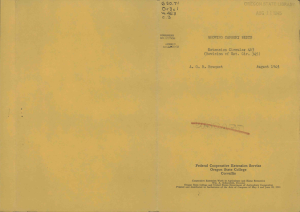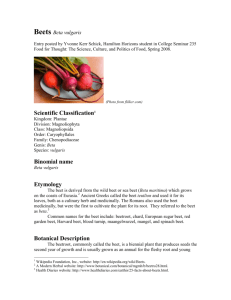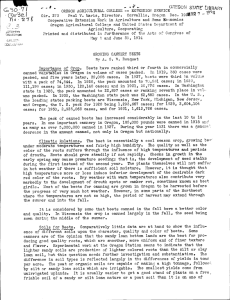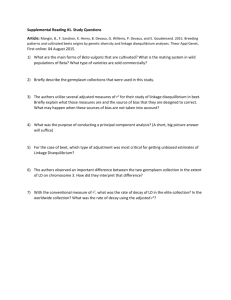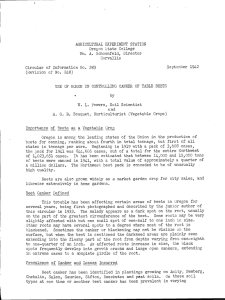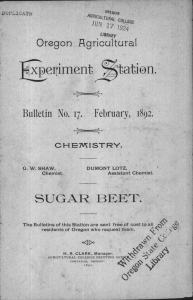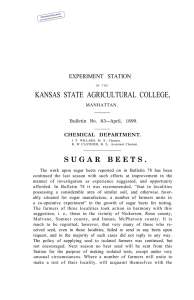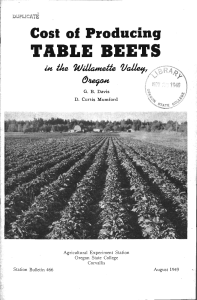Clippings A Weekly Column about Plants, Gardens, & Yards
advertisement
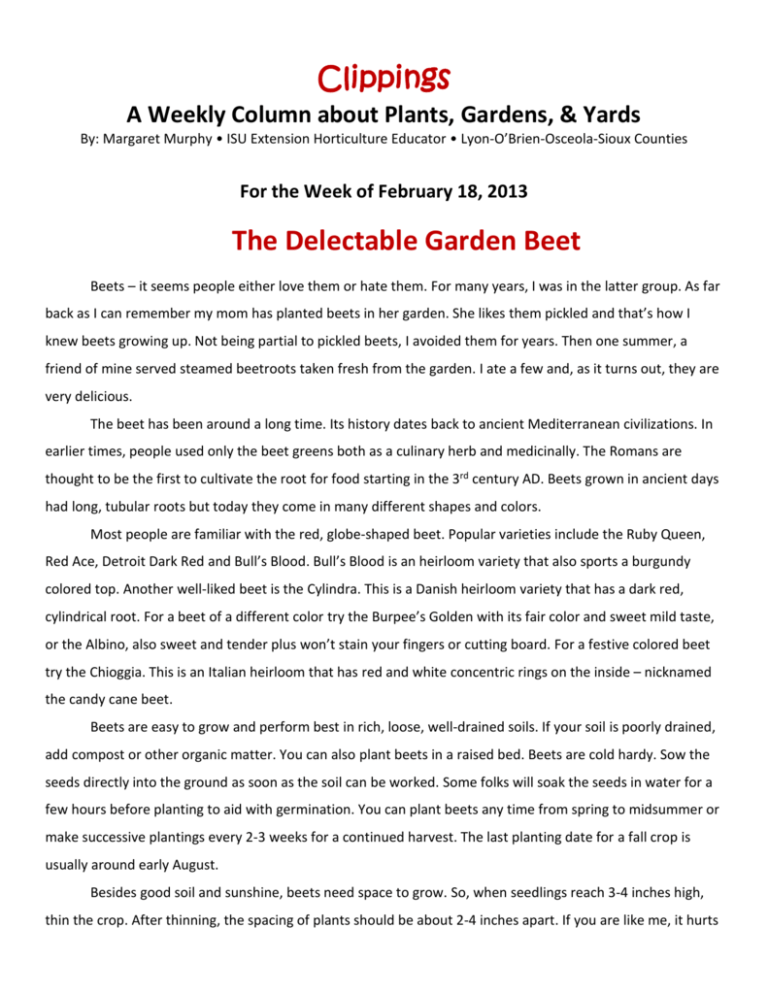
Clippings A Weekly Column about Plants, Gardens, & Yards By: Margaret Murphy • ISU Extension Horticulture Educator • Lyon-O’Brien-Osceola-Sioux Counties For the Week of February 18, 2013 The Delectable Garden Beet Beets – it seems people either love them or hate them. For many years, I was in the latter group. As far back as I can remember my mom has planted beets in her garden. She likes them pickled and that’s how I knew beets growing up. Not being partial to pickled beets, I avoided them for years. Then one summer, a friend of mine served steamed beetroots taken fresh from the garden. I ate a few and, as it turns out, they are very delicious. The beet has been around a long time. Its history dates back to ancient Mediterranean civilizations. In earlier times, people used only the beet greens both as a culinary herb and medicinally. The Romans are thought to be the first to cultivate the root for food starting in the 3rd century AD. Beets grown in ancient days had long, tubular roots but today they come in many different shapes and colors. Most people are familiar with the red, globe-shaped beet. Popular varieties include the Ruby Queen, Red Ace, Detroit Dark Red and Bull’s Blood. Bull’s Blood is an heirloom variety that also sports a burgundy colored top. Another well-liked beet is the Cylindra. This is a Danish heirloom variety that has a dark red, cylindrical root. For a beet of a different color try the Burpee’s Golden with its fair color and sweet mild taste, or the Albino, also sweet and tender plus won’t stain your fingers or cutting board. For a festive colored beet try the Chioggia. This is an Italian heirloom that has red and white concentric rings on the inside – nicknamed the candy cane beet. Beets are easy to grow and perform best in rich, loose, well-drained soils. If your soil is poorly drained, add compost or other organic matter. You can also plant beets in a raised bed. Beets are cold hardy. Sow the seeds directly into the ground as soon as the soil can be worked. Some folks will soak the seeds in water for a few hours before planting to aid with germination. You can plant beets any time from spring to midsummer or make successive plantings every 2-3 weeks for a continued harvest. The last planting date for a fall crop is usually around early August. Besides good soil and sunshine, beets need space to grow. So, when seedlings reach 3-4 inches high, thin the crop. After thinning, the spacing of plants should be about 2-4 inches apart. If you are like me, it hurts a little to pull healthy seedlings from the ground but remember you can enjoy the fresh, young greens in a salad. Overcrowding is one of the most common problems resulting in a poor crop. Interestingly, with most beet cultivars, each ‘seed’ is really a fruit containing a cluster of several seeds. Even if you are very meticulous about spacing your seeds when planting, you may still end up with seedlings that are too close together and need to be thinned. Poor growth can also occur due to soil that is too dry and crusted over. Keep your planted rows adequately watered especially during hot, dry periods. Mulching with dry grass clippings or peat moss may help as well. Beets can be harvested when the roots are 1 inch in diameter. Avoid letting them get much larger than 3 inches in size as they can become tough or woody. Leave an inch of stem and the tap root on the beet. Beets can be stored unwashed in a plastic bag and will last about a week in the refrigerator. For long-term storage, keep them in a cold (32-35 degrees F), humid location such as a root cellar. There are so many different ways to eat beets. So, if you’ve been suffering from “beet-avoidance” all these years, maybe it’s time to give them another try. You can steam, boil, roast or grill them. Cook them with the skins intact, which helps preserve the nutrients then peel before eating. Beets can also be frozen, canned or pickled. In Australia, pickled beet slices are a favorite on hamburgers. And don’t forget to take advantage of the wholesome beet greens. Put them in salads or sauté them in a touch of olive oil. For any questions, please feel free to contact me at mmurphy@iastate.edu or through your local County Extension office. Additional information was provided by ISU Extension and Outreach articles, Growing Beets in the Home Garden and Beets. ###
